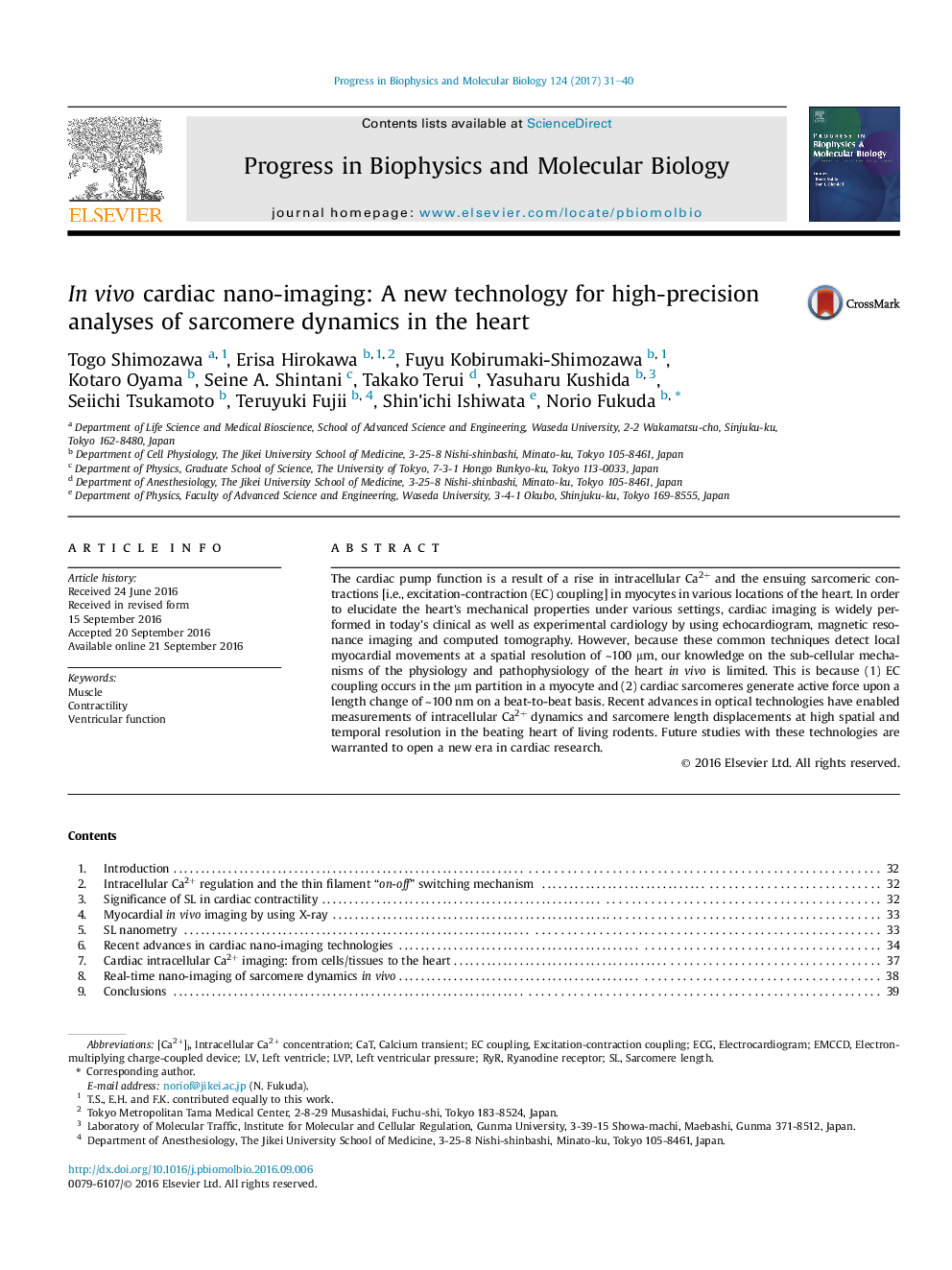| Article ID | Journal | Published Year | Pages | File Type |
|---|---|---|---|---|
| 5519887 | Progress in Biophysics and Molecular Biology | 2017 | 10 Pages |
The cardiac pump function is a result of a rise in intracellular Ca2+ and the ensuing sarcomeric contractions [i.e., excitation-contraction (EC) coupling] in myocytes in various locations of the heart. In order to elucidate the heart's mechanical properties under various settings, cardiac imaging is widely performed in today's clinical as well as experimental cardiology by using echocardiogram, magnetic resonance imaging and computed tomography. However, because these common techniques detect local myocardial movements at a spatial resolution of â¼100 μm, our knowledge on the sub-cellular mechanisms of the physiology and pathophysiology of the heart in vivo is limited. This is because (1) EC coupling occurs in the μm partition in a myocyte and (2) cardiac sarcomeres generate active force upon a length change of â¼100 nm on a beat-to-beat basis. Recent advances in optical technologies have enabled measurements of intracellular Ca2+ dynamics and sarcomere length displacements at high spatial and temporal resolution in the beating heart of living rodents. Future studies with these technologies are warranted to open a new era in cardiac research.
